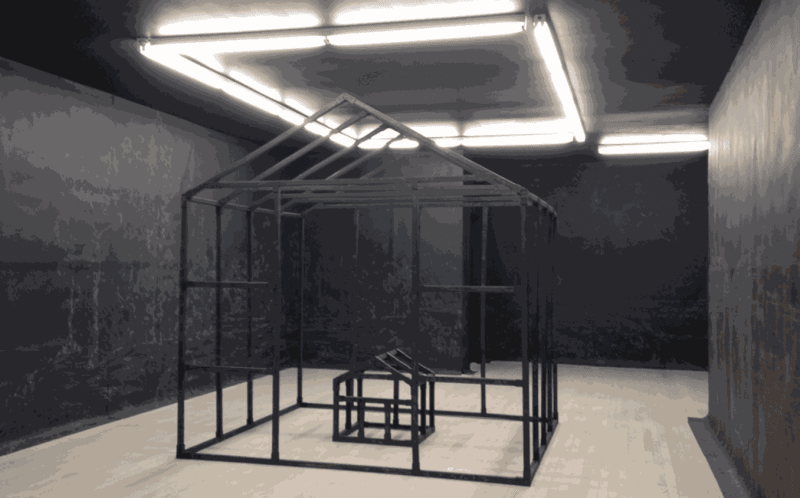Some artists struggle to make sense of their work, but Kysa Johnson has hers down to a science. The 39-year-old artist draws with graphic renderings of micro-structures, often taken straight from science textbooks, to illustrate the macro-worlds encasing these undetectable forms. She will outline, say, asexually reproducing yeast, repeated over and over in variations as she sees fit, to represent something identifiable and conceptually related—in the case of the yeast, Renaissance paintings of the Immaculate Conception.
One theme she’s revisited depicts the most fundamental of the infinitesimal: subatomic particles—specifically, their decay patterns, from unstable to stable, mapped out over time. To the atomically illiterate, these look like spirals, waves, or loops, intercepted with slightly curved projectiles, sprinkled with Greek letters and numbers. When Johnson first learned of the models in art school, she saw their steady rhythm as poetic, and a “way to understand the world.” Sketched out with these notations, subjects contain their own inevitable disintegration, shivering with a common infrastructure.
Sourced from complex physics theory, the diagrams denote a simple universal truth: everything ends. The artist, contemplating this, has used them to represent social decline and change. Chalk on blackboard paint is her preferred medium, both for its high-school science-class associations and its implications of ephemerality. At last year’s Armory Show, Roman ruins after a Piranesi drawing materialized on the blackboard walls of faux Bank of America waiting room; a 2011 installation at Dublin Contemporary constrasted an Irish megalithic tomb to incomplete construction projects, symptomatic of the Irish economic collapse.
...
View full press feature at interview.com

